Shirley Family History & Genealogy
Shirley Last Name History & Origin
AddHistory
We don't have any information on the history of the Shirley name. Have information to share?
Name Origin
We don't have any information on the origins of the Shirley name. Have information to share?
Spellings & Pronunciations
We don't have any alternate spellings or pronunciation information on the Shirley name. Have information to share?
Nationality & Ethnicity
We don't have any information on the nationality / ethnicity of the Shirley name. Have information to share?
Famous People named Shirley
Are there famous people from the Shirley family? Share their story.
Early Shirleys
These are the earliest records we have of the Shirley family.

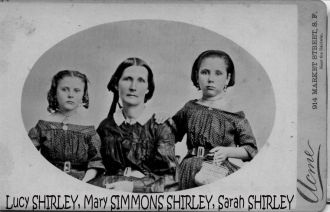
Shirley Family Members
Shirley Family Photos
Discover Shirley family photos shared by the community. These photos contain people and places related to the Shirley last name.

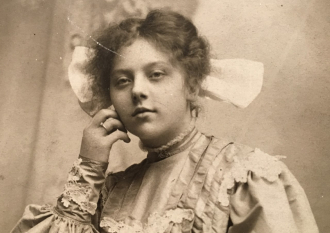


In the US Navy during World War II

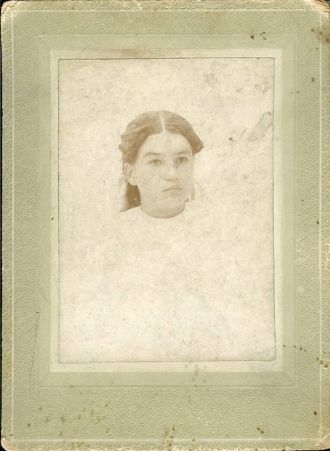
People in photo include: Alta Shirley

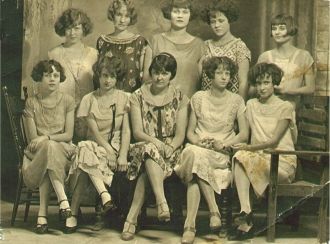
People in photo include: Olga Mitchell, Allie Johnson, Margaret Walton, Zada Walton, Cubian Swoveland, Marie Flahie, Ruth Shirley, and Florence Alice Palmer
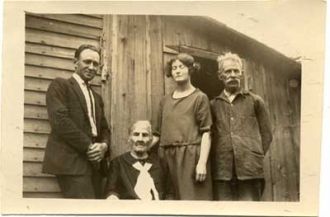
Shirley Family Tree
Discover the most common names, oldest records and life expectancy of people with the last name Shirley.
Updated Shirley Biographies

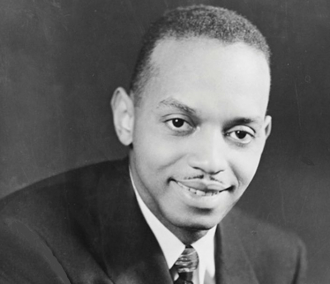
Popular Shirley Biographies





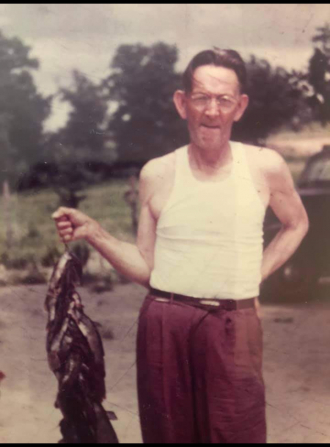


Shirley Death Records & Life Expectancy
The average age of a Shirley family member is 71.0 years old according to our database of 9,686 people with the last name Shirley that have a birth and death date listed.
Life Expectancy
Oldest Shirleys
These are the longest-lived members of the Shirley family on AncientFaces.
Other Shirley Records
Share memories about your Shirley family
Leave comments and ask questions related to the Shirley family.
James Frederick Shirley was born July 13, 1873, in Mill Creek, Salt Lake City, Utah. When he was twelve years old, [1885] his family moved to Fish Haven, Bear Lake, Idaho, where they settled permanently and built a home on the shores of beautiful Bear Lake. They had a family of seven sons, though four died when young.
James’ father, William Henry, a wagon maker in South Africa, was now a painter, and traveled to Montpelier, ID, each week for work. While there he became very ill and returned to Fish Haven. He died September 27, 1886, of painters consumption.
James’ mother, left a widow, struggled on with the assistance of her three sons, Thomas, Charles and James.
James was a talented musician. In Fish Haven, he played the organ for church and also for dances. Much later, he was also made the organist in his ward in Idaho. In Fish Haven, he belonged to the “Fish Haven Band,” and could play either the bass horn or the snare drum. Later, in Idaho, he belonged to the Salem Silver Band and played the bass horn.
In Bear Lake area, quite often they would go to the different towns to play for celebrations or rallies. They went in a fancy wagon, which was called The Band Wagon.
During the winter, the young people would go back and forth from Fish Haven to St. Charles in their sleighs, for dances. It was about the last dance of the season in Fish Haven that Sarah Virgin came with a group of young people from St. Charles. They began to dance a square dance. One more couple was needed to complete the set, so a boy from St. Charles asked Sarah to dance with him. When they joined the set, a friend of Sarah’s was dancing with James Shirley, and she introduced Sarah to him.
James and Sarah started going together on New Years Day, and after a courtship of two years, they were married in the Logan Temple, 21 October, 1896.
Two years later, when their son, Frederick Amos was a year old, they moved to Salem, Idaho, an undeveloped area in the Snake River Valley, in October, 1898. They moved into a two room log house. It had a dirt roof. James immediately busied himself building fences, repairing sheds, etc.
The house was crudely built. So, James made a table, flour bin and cupboard to help furnish the small kitchen. The cupboard reached nearly to the ceiling to save room space.
Many of his sons later became professional carpenters.
As soon as the first winter’s snow was gone, James began to plow. He plowed and planted about 26 acres in about four weeks, besides ditching, fencing and a great many more spring jobs. They had begun to sink their roots into the Idaho soil.
Early one morning in September, 1899, James left with a group of neighbors for the forest to get wood for fuel for the second winter, and to build a barn. The roads were bad, and it was a long distance from home. They went through “Calamity” [a pass], and into the timber. One night as they were cutting wood, James had the impression that he should be at home with his wife. But it was dangerous to go over “Calamity” at night, and the others made him wait until the next morning. He returned immediately to find a baby girl had been born the night before. Everything was okay due to help of others. The couple eventually had eleven children altogether.
This oldest daughter, Myrtle, said her father was a kind, affectionate man, and had many friends because of his great sense of humor and his optimism.
As a hard working farmer, he wore colorful work shirts under his bibbed overalls. Sometimes in the summer he wore a hat with a circle of mosquito netting around it to keep the gnats and mosquitoes off his face, as he held the lines and drove the horses with one hand and regulated the mowing machine with the other. From early spring until late in the fall, James worked hard to make a living for his family. The lower part of his sixty acre farm was used for pasture for the farm animals. He planted acres of alfalfa, wheat, oats and potatoes and all the plowing and farm work was done by horse power, at first.
They planted trees, and eventually, on the East side of the house and directly in front of the door, was a large fruit orchard. They had pears, plums, and several kinds of apples. While Sarah bottled fruit, James also stored many boxes of them in a cellar back of the house. Also stored in the cellar were potatoes, squash, carrots and other vegetables.
The family also planted and harvested gooseberries, raspberries, currants. While a lot of work, they all enjoyed the luscious fresh fruits.
James’ face was always clean shaven and his brown hair was slightly parted on the left side. On Sunday, he made his family proud as he dressed neatly in his suit and white shirt. He was a man of great faith, and was often called into homes to administer to the sick.
He administered to his family too, and they were blessed because of it, particularly during the 1918 flu epidemic. Once his daughter, Bonnie, broke her arm. The Dr. did not do a good job of setting it. But James administered to her, and the pain ceased immediately.
He was faithful in accepting callings in the church and in filling them. He set a good example for his children to follow, by attending all his church meetings.
Another very sobering experience showed that he had and followed spiritual impressions. There was an evening when Sarah was alone with her family. James was not expected back for the night. In the middle of the night, when everyone was asleep, Sarah heard something outside. She arose, and went quietly to a peepout hole they had. Then she went back and got their 22 rifle. A daughter awoke. She too heard steps and movement out at the barn. Sarah moved quietly toward the door with the gun. The footsteps outside stopped just prior to walking onto the porch. A voice said softly, “Are you awake, Mother?” Sarah dropped the gun to her side and called, “Jim! Jim!” When the door was unlocked, and James saw the gun, he and Sarah both began to cry. If he had not sensed that his wife was awake inside and called to her, she probably would have shot him, thinking he was a prowler, and causing a terrible tragedy.
In time, threshing machines were invented, and the first use of it was a very memorable time. Grain had been cut, bundled and put in stacks All the relatives and neighbors came together and helped each other, all going from one farm to another until everyone’s grain was threshed out of the stalks. The machine was powered by a steam engine that belched out lots of black smoke. The men threw the grain into a “separator,” which beat the stalks, blew away the chaff, and then sent the grain through a long tube into sacks. Someone sewed up the sacks. All the men soon became covered with dust.
The children had lots of fun, daring each other to stand under the blower of the chaff, until they were covered with beaten-up straw. When the thrashing was all done, they loved to climb up to the top of the straw stack, and slide down and frolic in the stuff.
While the men were threshing, the women prepared to feed the men. They also worked together. They often had to borrow dishes and cooking utensils from each other to take care of the big crew of men.
After threshing season was over, James and other family members went up into the timber to cut firewood for the winter. Again, they worked together, so they could have their wagons loaded with logs and return in three or four days. Much later, mines opened, and they made similar trips to them to obtain coal.
In June, 1907, James was sustained and set apart as second counselor to the bishop of the Salem Ward. This was an added responsibility for him, and a long distance to travel, to attend all his meetings, bishop’s meetings, and calling on the members of the ward, to collect and raise funds, for a new Rock Meeting House, which was near completion.
Having six children by 1908, the family decided to move to a larger home in Salem itself, though they kept working the farm. Sarah wrote of this exciting event: “January 1st, 1909, a warm day for winter. We all went over to Father’s for awhile and James played on a piano. Then we hooked up the team, and part of the families went for a sleigh ride. Then we went to the new house and made a fire, then we let the children stay there and enjoy themselves while we adults and the small children went to visit relatives and spend the evening. … January 8th, 9th, we went up to the house and started to paper the rooms. On Jan 13th we took a few necessaries and the family and went to the Townsite house to live. Then James brought more furniture, the chickens and cattle.”
While they had the farm to raise crops, here at the townsite, they had milk cows, chickens, pigs, cattle and horses. From the chickens, pigs and cattle, they obtained their meats.
The house was made of lumber, not logs, and painted green. It had three rooms and a back kitchen; later James added another big room, which made five. There was a large living room with a coal heater. The children gathered around a large, round table to do their homework. There was still no inside plumbing, no electricity.
Along with the green house, a cellar and sheds, the family got a surprise, thrown in for free, which became a permanent possession for all to enjoy. Myrtle relates:
A flock of sparrows had laid claim to a row of box elder trees that grew on the West side of the house and across the large front lawn. They seemed to be year around residents, migrating to barns and other shelter for the winter months, but returning to the trees early in the spring. By late June and throughout the remainder of the summer, they were well established in their old roosting ground. Each morning, at the crack of dawn, we were awakened, first by a twittering sound from the trees, this was followed by occasional chirps, from the early risers, as they tuned their voices, and made ready to sing in the morning songfest.
Within minutes they all burst out in unrestrained volume and rhythm. Their songs vibrated through the still morning air. They sang every song they ever knew from the Sparrow Song Book, and ended up with the Hallelujah Chorus, sung in their own language and arrangement.
As the sun rose higher, in the Eastern sky, their music stopped, almost as abruptly as it started, except for a few stragglers, who concluded with the last and final “Amen” and “Amen.”
We learned to adjust our nervous system to this daily serenade, and the louder they sang, the harder we slept.
Five more children were born in the green house.
While they enjoyed having a house in the townsite, nearer to school and church, it meant they would have to travel out to the farm to keep it going. Each spring, the work began. Crops were planted, watered, harvested. Each family member had a job to do. The older brothers would work during the day on the farm, and in the evening feed and milk the cows at the townsite.
The girls would go out in fruit season and pick the fruit and berries, then bring them back to process them as needed. Younger children did such things as filling the large reservoir built on the side of their stove with water, carrying in coal and kindling from the wood shed, and feeding chickens and gathering eggs, etc. Mother and oldest daughter baked eight loaves of bread at a time to feed their family.
They also planted, cared for, and enjoyed a large garden.
They delighted in Christmas. One Christmas, the children were awakened very early Christmas morning by a mysterious voice, with a German accent, singing,
“I come ven you all were fast asleep, your stocking jest to fill.
Down by the chimney slowly creep, so noiselessly and still.”
All bedlam broke loose as shirt tailed clad kids popped out of every bedroom door. With surprised looks and wonder they gathered to find a tall, Edison phonograph in their living room, and listened in delight to the rest of the song being played on the record.
James and Sarah laughed because for once they had really surprised the children with a gift which they had not found ahead of time. They had hid it at a neighbors, and brought it across the fields earlier in the morning. All the family loved this special gift with its opportunity to hear wonderful music, and this special Christmas.
After the sugar factory was built in Sugar City, James sometimes worked there for extra money. In 1913, with the growing needs of his family, James decided to get more property to farm. He obtained previously undeveloped land, which meant a lot of work. It was 25 to 30 miles away. It was covered entirely with sage brush and lava rocks. They had to remove all of those obstacles, then plant. The wheat, unfortunately did not do well, and they were eventually forced to give up this project. They were there long enough, however, to find an old cave where there were stalactites and stalagmites.
For a time they also sent herds of cattle to a valley in distant mountain lands during the summer where they could graze on grass. Those who cared for the cattle stayed there with them most of the summer. One uncle wrote that while he was there, he decided one night to make some cookies. His mother had sent supplies, and recipes. He was making great progress on the cookie dough until he saw the words “1 cup of shortening.” He did not know what that was. He looked through all his ingredients and could not find anything named “shortening.” So, finally, he made up the rest of the recipe, then took a cup out of it, and threw it away. That is the only way he could figure how to “shorten” the recipe.
James suffered terribly from hay fever all his life, which made his work as a farmer, very difficult. Family members said he would usually come in at night so tired! He would sneeze, wipe his eyes, and cough. There was no medication then for it. He often tried to take other jobs to earn money which would take him away from farming, leaving the farming for his growing sons. In 1923, he worked cutting down trees and helping load them on the box cars of trains for a lumber company.
In the spring of 1924, James and his son Leo went to Ogden, Utah, to work and earn extra money in the fruit harvest of a relative. James became sick. But he didn’t want to go to the doctor. He hoped he would get well and be all right, as usual. His sickness went on for several days, and when he did go to the Dr., the doctor couldn’t do anything for him. James’ appendix had ruptured, and peritonitis had set in. James died at the age of 51 on July 24, 1924.
His son Leo was with him when he died. He began to feel resentment that his dad would be taken, leaving a widow with nine children. Then he had a special experience. He says, “I didn’t see him, nor did I hear him, but I know my father put his arm around me and said, ‘It’s going to be alright son. Things will be fine.’”
Leo, who had been scheduled to go to school, now gave up that dream, and spent the next several years running the farm with his younger siblings.
Oldest daughter, Myrtle pays tribute to her parents. “My parents tried in every possible way to make our home life a happy one and to give us the schooling and opportunities for growth they had missed in their lives, and to keep us active in the church. We were taught by example and at times it took some stern discipline to bend our wills in the right direction, and for this I will always be grateful.”
Though dying relatively young, James left a great heritage for his children, who were blessed to have his beautiful example and teachings.
Sarah was born July 22, 1876, in St. Charles, on the beautiful Bear Lake, Idaho. She was the oldest child of ten children. By the time she started school in 1886, her parents had already taught her to read, write, add, subtract and divide.
Sarah appears to always have been a student of the gospel. She was made a Sunday school teacher before she was sixteen years old. She loved to sing, and sang in the ward choir. She also sang solos and duets with others.
She loved the social life around Bear Lake too, which was exciting and eventful. They had political rallies, boat rides and dances. It was at a square dance in Fish Haven that Sarah met James Shirley. They were married about two years later in the Logan Temple.
Just after she was married, the sealer told them, “If ten devils have been after you before, one hundred will be after you from today, after you have made covenants.”
The very next day, as they were traveling home, they stopped at a spring in Logan Canyon for a drink. James had made his team secure by putting on the brake and fastening the lines well. But before he could get a drink from the spring, Sarah heard the team start to move up the canyon. James ran over and caught the mare by the bit and called, “Whoa.” But she gave a lunge forward and threw the lines lengthwise on the ground. Then the horses jumped into a run. As the wheels passed by, they threw dirt into James’ face. He ran after the team as fast as he could. They turned around a high ledge where the rock had been blasted out to make a road along Logan River Bank. Soon he came to his team tied to quaking aspen. Two men were going down the canyon with a broken wagon wheel and when James’ team saw them, they turned off through the quaking aspen. The trees flipped up in back of the wagon. The men caught and tied the horses up. There was no damage to the wagon or its contents. Sarah and her mother-in-law who was with them caught up, and got into the wagon. They continued their journey, and soon came up over the divide on a very dim road. As they started down the mountain they saw some sage hens off to the left. James put on the brake and gave Sarah the reins. He went to the back of the wagon and took out a shotgun and followed the birds a ways. As he came back and put the gun under the wagon cover and got into the wagon, Fan again acted like she was possessed and both were ready to run again. They traveled down the road a short ways, then both horses started running. James soon found a place to turn them to the left and up a slight incline where he stopped them. When he got out to look things over he found a bolt had fallen out and let down the brake. So he wound it up and they went down safely. They then went on to their new home. What a honeymoon!
In October, 1898, Sarah and James, with a young son, and a sister and her husband, moved to Salem, Idaho. They camped overnight several times on the way, “arriving all well, only much tired out with the long, cold journey. It had rained on us nearly all day Sunday. That night the wagon covers had leaked; our bedding was wet; we couldn’t find any water that would be good for use; and having no way to light a fire, ate a cold bite and went to bed on top of our load. When morning came every thing was frozen and the ground covered with snow.
When we reached our destination we found the place still occupied by the folks whom we bought the property from, so we had to help move them.”
But undaunted, they moved into a two room log cabin with a dirt roof. Sarah and James lived in the East Room and her sister and brother-in-law lived in the West Room. There was much to be done. The men soon busied themselves with repairing sheds and building fences while Sarah and her sister settled down to raising children and house keeping.
Of their first winter in Idaho, Sarah wrote, “We stayed at home most of the winter, not having any sleigh to use. All were blessed with good health. It was a very cold winter and spring. The snow went early in April and the planting season began.” In August, they were pleased that Sarah’s parents and their eight children also moved to Salem, where they bought a big farm on the West side of them. The family was all together again.
They became active in the Salem ward. Sarah say she and her mother went around the 640 acre section where folks lived as visiting teachers. She also served as a Bee Hive advisor. Later she was the first Gleaner teacher in Salem Ward for a number of years. She was a Sunday School teacher for a long while. Finally, she taught Relief Society theology lessons for thirty years, from 1926 to 1956.
She was rather tall in stature, and wore her hair drawn back in a neat knob at the top of her head. She was blessed with a strong and vigorous constitution, which helped her to endure the discomforts and privations of early pioneer life, such as having no running water in the house, no electricity and no inside plumbing. She had a favorite saying which was, “Every back is made for the burden.” And, she would bear heavy burdens in her life.
Sarah loved music and often sang around the house, music she had learned singing with her father and sisters around an old, upright organ. Among her favorites were “What Shall the Harvest Be,” and one about the Israelites crossing the Red Sea, with a chorus which went, “Sound the Loud Timbrel o’er Egypt’s Dark Sea. Jehovah hath triumphed, His people are Free.” She also sang in the ward choir and for old folks parties.
Myrtle, the oldest girl, remembers that Sarah was full of love and concern for her family. There was nothing she wouldn’t do for her children, if she could do it. Sarah made clothes and knitted the family’s stockings and mittens.
When winter came and the windows were all frosted over and some one got the croup, she would prepare a mustard plaster with an aromatic camphor, mixed with lard and mustard. Then she would wrap a hot iron with cloth and put it in the bed to keep the patient’s feet warm. This proved to be a sure cure for the worst case of croup.
In 1918 a world wide flu broke out. It was severe and throughout the world, millions of lives were lost. Not many families in Salem escaped this deadly disease. It seemed everyone in the Salem Ward were sick at the same time.
The Shirley family was hit very hard. Sarah worked through many long days and nights of hard and constant care, administering hot and cold packs to reduce the high fevers. She was pregnant with Ada. For a time Sarah herself became bedfast with others, all near death for days. Sarah had a very high fever, and they feared for her baby. There had been reports of how dangerous the flu was for unborn babies. Doctors couldn’t begin to get around to help all those in need.
But they were blessed to have help from neighbors who brought food. And particularly, through the faith of James, who used administrations and prayers, their lives were spared. Only one child, the youngest, Rodney, did not get the flu. He became known as “the little scout.” He would sit on the back porch patiently waiting for a pot or chamber to be emptied, then he went from room to room to empty the wash basins and the potties.
On April 21, in the midst of this, Ada was safely born. A neighbor who lived down the street, was brave enough to come to help.
Sarah worked hard, as all farmer’s wives did. Threshing time was particularly memorable. The women joined together to prepare food for the huge threshing crews. They borrowed dishes and utensils so they would have enough to feed everybody.
When threshing was over, she would exchange the old straw in the mattresses for new straw. First she washed the mattresses, then filled them with clean, dry straw. They were fat and hard at first, but in time they became softer and comfortable to snuggle down into during the cold winter nights.
The girls were given inside chores as they grew older, such as helping churn the cream, and ironing with heavy irons that were heated on the kitchen stove.
Sarah had a sewing machine, which she operated with her feet and hands, and made the children’s clothes. Myrtle came to know that when she went to town and came home with a big roll of outing flannel, that in the near future, a new baby would arrive at the home.
Because of James’ terrible hay fever, he eventually began searching for other kinds of work to do, letting his older sons handle the farm. The two oldest children married and were living in Utah. James went to Utah in January 1924 to help on a fruit farm owned by a relative, and to help them remodel their house. He often visited his married children living there. In April, Sarah went to visit him with her youngest. He took the day off and they had a wonderful time together.
But Sarah said later, that after she had said goodbye to James, to return home, a feeling of sadness came over her and she cried and cried. In July, James was found to have a ruptured appendix. Sarah was notified and went to Utah. He promised her that as soon as he got well, they would go on a long trip together.
But instead, he died. Through the help of her sons and other Utah relatives, all the necessary arrangements were made. Sarah and other family members, and also James’ body, went back to Salem by train.
Sarah was tired and exhausted from the pain and anguish she had been through. She struggled to smother her emotions and hold back her tears.
At home, she was soon surrounded by her children, who tried very hard to buoy her up and comfort her. She also had her parents, and other relatives nearby, and friends who came to show their love and support.
But all the family acknowledges that the years following James’ death were all long, lonesome, and terribly hard for Sarah. Children who slept with her remember her silent sobs in the middle of the night. It was most sad when she had to leave home to work, sorting seeds in a seed house, leaving the children to manage the work at home and on the farm. The children did everything they could to support her financially and emotionally.
One son noticed the very badly worn shoes of his siblings. He was working at the sugar factory at the time. He bought a shoe last and other equipment and set up a shoe repair shop at home. When the belts at the sugar factory wore out, he would bring home the good part and sole shoes with it, including any needy neighbors‘shoes.
The children kept growing. One by one they graduated from high school, many of them with honors. Two sons went on missions, and others as young women and men got enough education to start teaching school to help out financially. Other sisters went directly to work in stores, etc. All did what they could to help their mother and each other.
And, of course, one by one, they began to marry.
Eventually, all who were still around took on the project of building a new house.
Some say it was the girls’ embarrassment about their green house when boyfriends came that caused them to take on such a project. But everyone worked hard to raise and save money for it. Those who helped raise sugar beets suddenly had new motivation to raise a good crop. One daughter says “I know Hazel and I spent all summer weeding and hoeing those beets and maybe even talking to them, because they grew into the biggest and best we had ever grown.” Other siblings, who had jobs, saved their money to buy paint and other materials.
The brothers tore down the old house so they could use its materials. They dug the footings for the foundation, even though the ground was frozen at the time. They had finished the framing and plastering late in the fall.
The project was possible because Fred, the oldest, had learned the construction trade when in Utah. He designed the house for them in the latest styles used in Salt Lake City, and guided the work. So when the house was finally finished, they had special features that were the first to be introduced into the Rexburg area. They were all very proud of their new home and of the fact that they had built it themselves and together!
And great was the day when the Electric Power Company finally brought power lines into Salem. Before that, the older children got up early Monday mornings and each one turned the old washing machine, by hand, for a few timed minutes. By this method, a few washersfull of clothes were done before the school van arrived. Over time, electric lights replaced the kerosene lamps, an electric iron replaced the heavy flat iron, and an electric washing machine replaced the wash board and the hand washer.
Sarah and James raised a really wonderful, strong family of their own. In fact, she was once chosen “Mother of the Year” in her area of Idaho. On top of Sarah’s own family duties, she performed as a midwife and gave help to others in sickness. She later brought into her home for a time many sweet little orphans, three of them her sister’s children, and later five of her own grandchildren. She attended and cared for the aged.
She had several incidents in her life when she felt her life had been preserved.
In later years, her life was less laborious, and she was blessed to go with many of her married children on traveling expeditions throughout the Western states.
Finally, she left a legacy as a strong teacher of religion. She and James had many religious books in their home. She loved to read. She had a remarkable memory and this helped her gain a knowledge of the gospel. She was quick to defend the truth at all times, even when there was opposition. She became known throughout her area for her gospel teaching ability in Relief Society and Sunday School classes.
Throughout her life, by teaching and by example, she taught the principles of prayer, fasting, tithe-paying, church service and participation. In recording her own life, she expressed her thankfulness for her children and grandchildren who had served missions, been married in the temple, and were faithful to priesthood callings. She prayed her later descendants would follow that example, and that after they were married in the temple, they would keep their sacred covenants and would always be virtuous and true.
Sarah Frances Virgin Shirley died December 15, 1968, at the age of ninety-two. All her descendants greatly honor her.
William Henry Shirley was born January 19th, 1829, in Portsea, Hampshire, England. Very sadly, his father died when he was only twelve years old. An uncle, who owned a ship and made trips between England and South Africa, suggested to William Henry and a brother Thomas, “Come and go with me to South Africa where there is a chance for young boys.” So these two boys went to South Africa, leaving a younger brother home in England with their widowed mother.
When they arrived at Cape Town, the boys served as apprentices to a man so they could learn his trade. [Some give the name as Mr. Streak; others as Mr. Cadie.] William Henry eventually became a wheelwright. He and his brother helped make wagons that were then sold to the British Soldiers who were there to control the Kaffir [or Kefir] tribes of Africa.
The Shirley Brothers Meet the Bubb Sisters
A lone apple tree separated the yards of the Shirleys and the Streaks where Maria lived and Martha came often to visit. When the apples were ripe, ready to pick and eat, the Shirley boys, William Henry and Thomas Charles, soon picked those on their side, and after eating all those, figured out a way to pick the apples off the neighbor’s side of the tree. Henry and Thomas built themselves a long wooden trough by putting two long pieces of lumber together. All they had to do was put the wooden trough up in the apple tree into the other side, put it under the apples, then shake gently and the apples rolled down the trough right into their hands and pockets.
The girls soon noticed their apples were disappearing. So Ester Maria and Martha Sarah decided to catch the culprits. They set up a little hiding place to sit, wait, and watch. A day or two passed, then it happened. Maria and Martha saw Henry and Charles leave their house, pick up the wooden trough and head straight for the apple tree. Just as the boys began to shake the apples down, out came Maria and Martha and caught them in the act. Well, it seems this incident led to accusations from the sisters and apologies from the boys. This was the beginning of a friendship.
William and Maria had other times to extend their friendship.
Finally, William Henry served as a Sunday School teacher in the Church of England which Ester attended. This led to their eventual marriage. Later his brother married her sister.
William Henry met the Mormon Elders, and was the first in his family to join the church.
Later his wife joined.
In March 1859, he and his wife, with an infant son, set sail for America on the ship called Alacrity. A year later, his brother and her sister sailed on the same ship.
Sailing to America (Told by Maria Bubb to Sarah V. Shirley)
The ship on which William Henry and Maria sailed went past the barren island of Saint
Helena, off the west coast of Africa. This was “In the Atlantic where Napoleon Bonaparte had been exiled by the English, and was later buried on the island.” Fresh water was needed on the ship, so Maria and William Henry went by small boat [I assume they were with a group] to that rock island, and climbed up on it by a rope ladder. They took the time to look out at the ocean in all directions. Then they gathered and took on a supply of water, food, etc.
The crossing of the ocean took them three months. They finally landed in Boston, Massachusetts about 1857, on to Missouri, where they bought supplies, and then on to Council Bluffs, where they joined a company of Saints and started for Salt Lake City. The Captain of the company was Edward Stevenson.
At a point where they outfitted to cross the plains, a man in the group needed help and William Shirley bought him a wagon and team for the journey to Utah. He was to pay William Shirley back in Utah. Many people were in debt and unable to pay back what was borrowed, so President Brigham Young told the people to forgive and forget their debtors which William Shirley offered to do for his friend.
William Shirley had also bought a half interest in another wagon and team for Maria and their son Thomas to travel in. The woman had no children, and was to do the cooking while Maria and friends went to the river on wash days and wagon repair days. They washed in the river and hung their clothes to dry on the grass and willows. One day they were told the cook had boiled eggs and cooked ham. One of the girls asked where it was, but was told she hadn’t cooked any. So the questioner walked around the wagon tongue and over the jocky box and found it. They had a good meal that night. She had done that thing before and dropped the egg shells under the wheels.
This same person complained about Maria’s bawling baby, so Maria took it from the back of the wagon and carried it the rest of the way. One night it rained so they gathered brush to put their feather bed on and made a trench to carry away the water. That night they heard the water running under their bed.
When she arrived in Salt Lake City, her shoes were worn out. Henry eventually made her shoes from cowhide to wear.
When they got to Great Salt Lake City they stayed in a room of Mrs. William Penrose. Later on Maria was told she had better bring the potatoes in from outside as they might freeze. She said, “We will shut the outside door.” Soon she went and got some potatoes and put them in cold water. They stuck together. She said, “William, what ails these potatoes?” From the frozen potatoes, she had begun to learn life was different in the frigid north.
In 1860 they received their endowments in the endowment house in Salt Lake City, and in 1875 they were baptized into the United Order. They eventually had a family of seven sons, four dying when young.
William worked very hard at painting for Silver Brothers and wherever he could get
work. He lived at Mill Creek where James F. Shirley was born. He lived at Paris before Charles C. Shirley was born. He went to Logan to try and get work on the railroad and find some oranges for Maria, which she missed. He could only get some orange marmalade, which was just not the same.
They finally moved to Fish Haven, Idaho, where he purchased sixty acres in the south
field and acreage on the town site where he built a home.
In Fish Haven, William painted a panorama of scenes he exhibited about animal life in South Africa. One scene showed the sinking of the Jennette in the Arctic Ice.
He also worked a great deal on the new Church house in Fish Haven. He made lounges with nicely carved fruit and etc. To decorate them, he painted two scenes of a vessel on the ocean. One picture was a vessel in full sail, and the other was a scene of a child in a high chair and a cat reaching up and licking the slice of bread. The corner of the room shone clearly and the faggots were hung on the wall ready for the fireplace. The boy’s hair was blonde and curled.
But William’s full time work was as a house painter, and his last job involved traveling to Montpelier, Idaho each week. He was painting on a roof and got sick. He got down and tried to paint on the side of the building but was too dizzy and went to his room in the hotel. He called a Dr. Hoover who found he had painters consumption. His lungs were badly damaged. He had to arrange for a man to take him to Fish Haven in a buggy. It gave Maria a bad fright as he got out of the buggy. They had Dr. Hoover come again but William was too far gone for help. Fortunately for Maria’s sake, he had just made the last payment on the land in the south field, and had bought her a new set of flat irons.
He died 27 September 1886, at his home.
He had sacrificed much in his life for the gospel. If he had stayed in South Africa, he probably would have become rich. But for the sake of the gospel he left all, and was faithful to the gospel’s principles to the end.
Followers & Sources




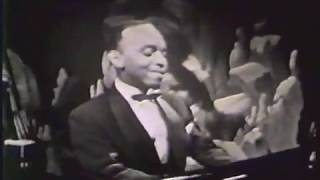

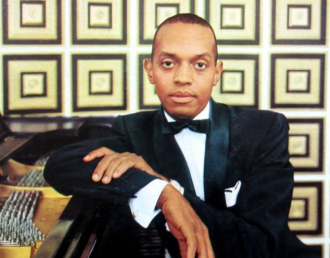
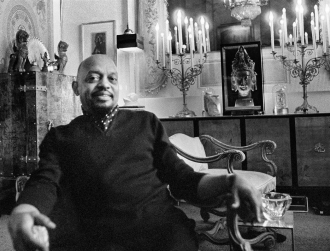
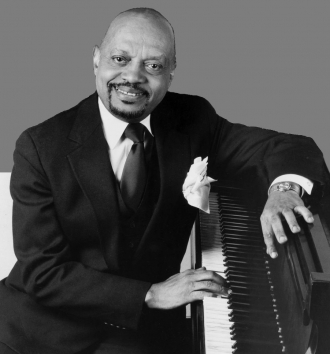

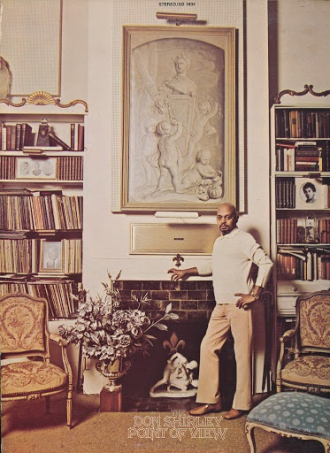



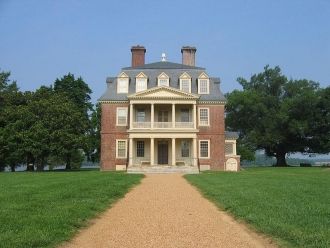



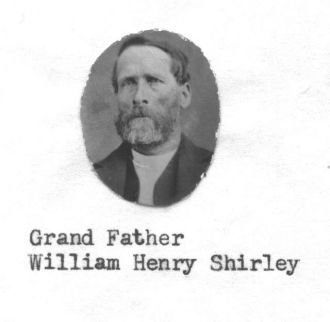

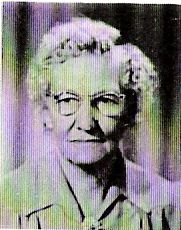

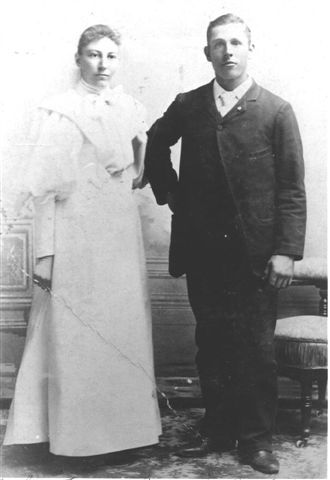

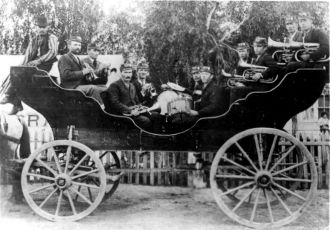
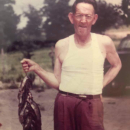

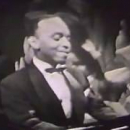
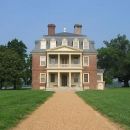

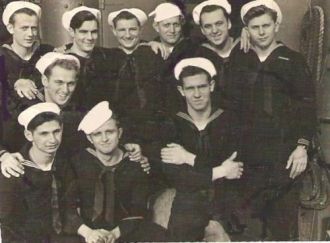
Origin of the Bubbs
They were of Dutch decent. Ester Maria Bubb was born July 7, sometime between 1830-5, at Port Elizabeth, South Africa. She was the daughter of George Bubb and Ester Schultz. Their parents had gone to Africa in 1830 to colonize South Africa.
Ester’s father was a whaler at one time, and he had caught a whale the night she was born.
On account of the very hot weather of that country, the men would get up very early in the morning and work and then rest during the day, and Ester and her sister, Martha, would always have to serve them coffee and hot cakes at ten o’clock every morning, and then tea during the afternoon besides the regular three meals.
Their parents had a man come to the farm to teach the children, but the natives went on the war path, so they had to leave the farm for awhile and seek safety, and after that they didn’t have a chance to attend school. Their mother had fourteen children who grew to adulthood and two others who died when they were small.
Pet Monkeys (Told by Maria Bubb to Fred Shirley)
The Bubbs lived near the jungle in South Africa where there were lots of monkeys. Some times the boys would capture them for pets, using a special trick. They would take a small pumpkin and hollow it out, leaving a very small hole. Then they placed some seeds inside the pumpkin, which the monkeys really liked. They would then secure the pumpkin so the monkeys could not carry it away, and they would wait for the monkeys to come.
Sure enough, one would always show up. Each monkey would be so anxious to get as many seeds as possible, it would take a lot of them in its fist. But then the fist would be too large to pull out of the hole Even though it would see the boys, who came to capture it, the monkey would not let go of the seeds, because it was so greedy. So, the boys could always capture it.
When the boys captured the monkey, they would chain it to a tall post where they had built a small suitable house for the monkey on top. A large ring was slipped around this pole to which was fastened the small chain which held the monkey captive. This allowed him to run around for a great distance on the ground, and also to scamper up to the top of the pole and into his house. In this manner the monkey could be watched, fed, and enjoyed as a pet. And the monkey seemed happy too.
One day, their pet monkey captured a young grown-up chicken. He was delighted with his conquest, and raced immediately up to the top of the pole and into his house with the chicken in its’ mouth. There the monkey very carefully and meticulously began to groom and pick off the lice on that chicken. This is their normal behavior. The monkey really enjoyed doing this. After some time of this loving grooming, the monkey released the chicken -- unharmed.
When the boys saw it, lo and behold, right before their eyes, stood the chicken “plucked and naked“ -- not a feather left on it.
Hunting Lions
There were lions in the jungle near where the Bubbs lived. They said that the lions would roam in the jungles during the day and at night would come inland near the farms where there were water holes. Anyone who was interested in hunting the lions, which included the Bubbs, would listen for them in the night to learn where they settled down. Then, in the early morning hours, while the lions were still asleep, the hunters would take their rifles and go to shoot them. They felt they were a threat to their livestock.
Maria raised in town
Ester Bubb made butter on their farm at Bitenhage and kept each churning in brine till the next churning, then packed it in on the first churnings and put the brine on again. Then they would go into town to sell it. One of the boys would walk and drive the oxen while the mother sat inside and knitted for her family. One time when she went into Port Elizabeth and sold their farm products at Mr. Streak’s, his wife asked her mother if she wouldn’t let one of her children stay with her, as she had no children and Mrs. Bubb had many. It was decided Maria could live with the Streak family at Port Elizabeth. She had an upstairs room and could reach out the window and pick an orange anytime.
So, when Maria was nine years old she went to Utinhage and lived with Mr. and Mrs. Streak until she was married. They were very wealthy people and had a nice home and very large flower garden. They had a gardener who spent all of his time just taking care of the flowers. Mrs. Streak was very strict, although she was very kind and treated Maria as her own daughter.
There are more than one story of the developing relationship between Maria and William Shirley. They are probably all correct. One is that the Shirley brothers, William and Thomas, lived near the Streaks and found a sneaky way to get apples from their apple tree. Maria and her sister, Martha, who undoubtedly visited her often, caught the culprits, which developed into a friendship.
Maria was always full of fun, and when she was sorting oranges in an upstairs room, she would throw the spoiled oranges out the window at some of the boys who were passing by, but when William came along, he would get a good one.
When much older, Maria had William Henry as her Sunday School teacher. It was here that their love for each other was finally cemented. Mr. Streak always locked his gate at nine o’clock every night so when William came courting, she would be on one side of the gate and he on the other.
Finally, he was granted the privilege to come into the parlor and see Maria while Mr. and Mrs. Streak were there. At nine o’clock he had prayers with the family and was to leave. One night he decided to climb over the fence and meet Maria on the porch. The dog decided to go into action. William ran for the fence and the dog got hold of his pants. He soon asked if he could marry Maria. Mrs. Streak furnished her wedding dress and they were married in the Streak parlor by the Reverend.
Their first baby died about a month after it was born
Maria’s sister, Martha, married William’s brother, Thomas, and for a time the four of them lived in the same house in Utinhage together. In fact, the two sisters and brothers were always together. William Henry was a wagon maker and his brother a blacksmith. The two couples used to walk down to the ocean beach in the afternoons.
At some time, the chief of one of the African tribes told his people if they would kill all their cattle and bury them, their God would raise up ten for each killed. This resulted in a famine amongst the natives, so the English Government asked the white settlers to take the natives in as servants and feed them. Maria and William Henry got a Kefir girl called Kobosie, and Thomas and Martha took a Kefir boy. Kabosie helped both Maria and Martha, and they became very attached to her. A friend of theirs also had a native girl, and these two girls would visit each other. They wanted to look like their mistresses, so one day they dressed them up in some of their old clothes and the native girls went for a walk. It wasn’t long until they were seen going down the street of the city of Utinhage carrying their corsets over their arms and their shoes and stockings in their hands. Obviously, they found these “white man’s clothes” much too uncomfortable.
The first LDS missionaries to South Africa were Jessie Haven, Leonard Smith, and William Walker.
William heard the Mormon elders and soon was convinced they had a better religion and was convinced of the truth. He asked Maria to listen to the elders but she did not want to hear them. She had a dream one night that she went up to the spring for a pail of water. As she returned, a man met her and offered her a book which she refused. He took his handkerchief from his pocket and wiped the dust from his shoes and said to her, “I do this as a testimony against you.” Sometime later she was sick and the elders came to their home. She knew one of the elders as the man she had dreamed of and who had offered her the book she had rejected.
In April 1855 Maria embraced the gospel and was baptized by Elder Leonard I. Smith; William had been baptized previously.
After she joined the church, her parents became very bitter about it. One brother threatened William’s life. So eventually, in March 1859, Maria and William and a new infant son, Thomas, set sail for America to join the saints.
Mother Bubb walked some distance with Maria as she left for America. As she bade her goodbye she said, “Now Maria you are as good as dead to me.”
They sailed from Capetown on the ship Alacrity. It took them three months to cross the ocean. They landed safely at Boston, Mass. The Alacrity went back to Africa and the following year Thomas Shirley and Martha Bubb Shirley had accepted the gospel and sailed on the same ship via Gulf of Mexico and New Orleans. .
William and Maria had arrived in Boston and immediately proceeded to Council Bluffs where they joined a company of Saints and started for Salt Lake City.
Maria walked most of the way and carried her baby. William Henry had helped outfit a wagon in connection with a friend, and the belongings of the two families were loaded in the wagon. William had made a bed for Thomas in the back of the wagon, but because the friend objected to the “bawling” baby, Maria took him out and walked, carrying the baby, all the rest of the way. It took them three months to cross the plains, arriving in Salt Lake City, September 16, 1859. The baby was nine months old when they arrived.
Their new life was to be much harsher. They had never seen snow until that first winter in Salt Lake, and she wondered how they could live in such a place. She had brought some beautiful silk dresses and shawls with her from South Africa, but during a first year she had to give them up as trade for flour and the necessities of life.
Then, she was left a widow when her husband died in 1886, but she struggled on, with her three sons. She went bravely forward to make a home and establish her children among the Saints of God. She was very devoted to the church and would spend some time every Sunday morning reading the Bible, the Book of Mormon, or other church works.
She had a very loving and gentle disposition and had many friends, both old and young.
She was a very good seamstress, and spent a lot of time sewing for other people, making fancy quilts, burial and temple clothes. She also liked to make rag dolls or doll dresses for the children.
After her son, Amos, married and moved to Salem, Idaho, she made several visits to see them, eventually by train. From those visits, one of her granddaughters described her as a small woman who was always neatly dressed. She had really dark eyes, almost black. She was very friendly and sociable. She loved to tell James about all his friends and other things back in his former home of Fish Haven. When she wasn’t working, her hands were always folded in her lap, and she had a habit of twirling her thumbs around each other.
On one visit, her son took her on a tour of the new sugar factory in Sugar City.
She died March 1, 1925 and is buried in Fish Haven, Idaho.
Sarah Frances Shirley later wrote of her grandmother Maria and of her great aunt, Martha, Maria’s sister. “Although these two women suffered many trials, tribulations, and hardships, they remained true to the faith and were always ready and willing to acknowledge the hand of the Lord in all things. May their descendants follow the example set by these noble women.”